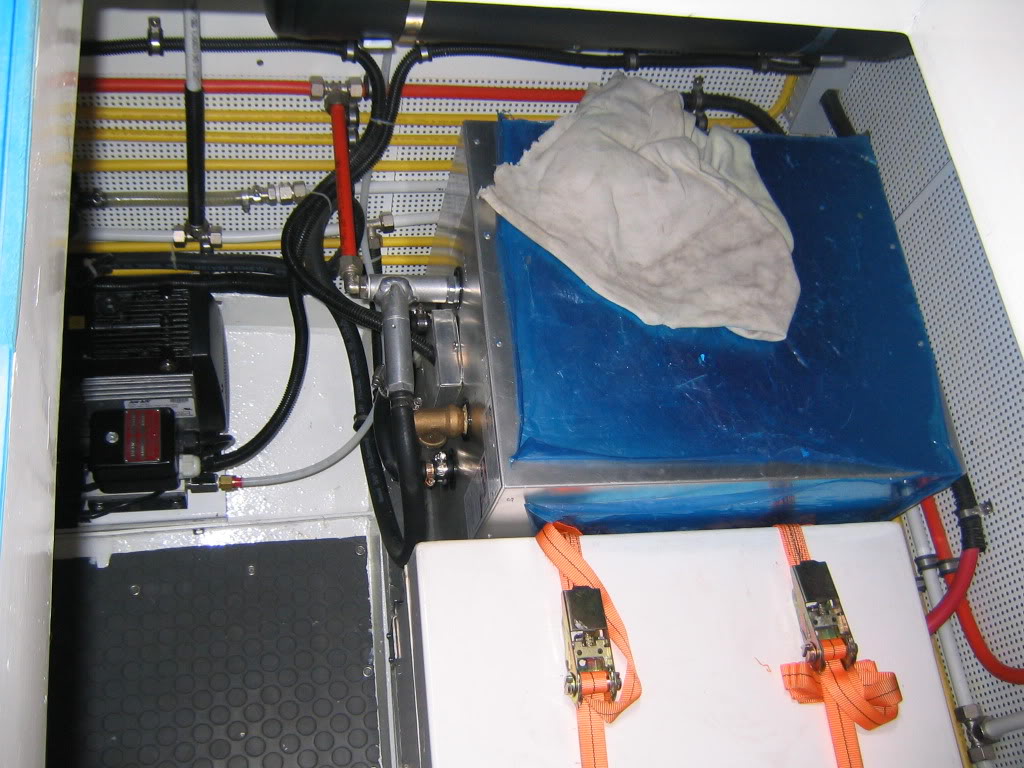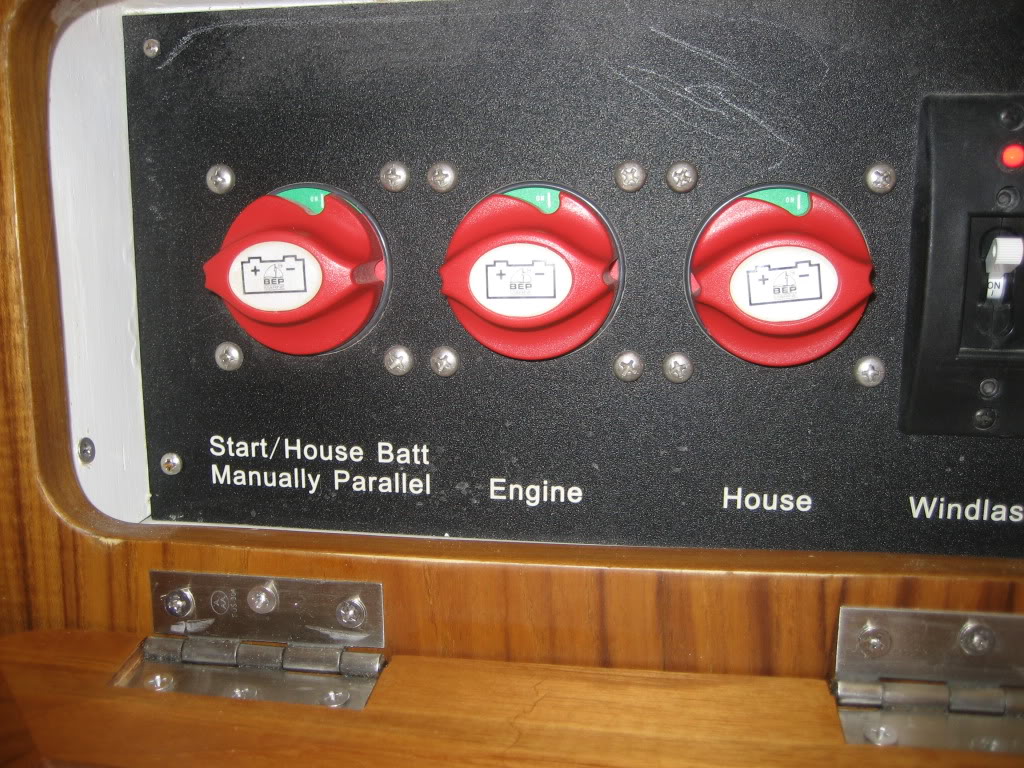So...until now my house batteries have lasted the night while anchoring out. *Lately though they have gone downhill....like I drop a hook for a couple of hours for an afternoon swim and they don't want to crank the engine back up! *I never paid much attention to the batteries as I wasn't concerned about it but lo and behold, previous owner, in his foresight, installed 4 group 24 automotive cranking batteries for a house bank, NOT deep cycle marine batteries. *


I swamped them all out tonight with 4 group 24 deep cycle marine batteries but soon I am installing an inverter and probably moving the house batteries to a better location. *What do you think is the "ideal" set up for a house battery bank for a boat (and why) that will have a small inverter and a big ol' 8 KW northern lights generator (kinda wish it was just a 4KW!!), no solar or wind power yet. *What say ye?
I swamped them all out tonight with 4 group 24 deep cycle marine batteries but soon I am installing an inverter and probably moving the house batteries to a better location. *What do you think is the "ideal" set up for a house battery bank for a boat (and why) that will have a small inverter and a big ol' 8 KW northern lights generator (kinda wish it was just a 4KW!!), no solar or wind power yet. *What say ye?


